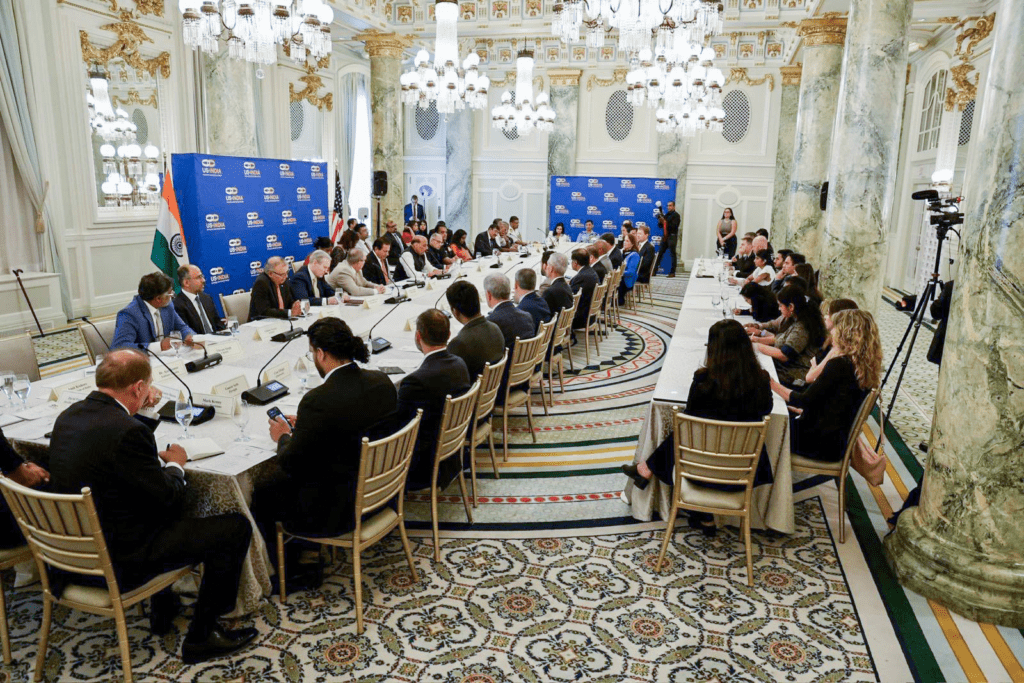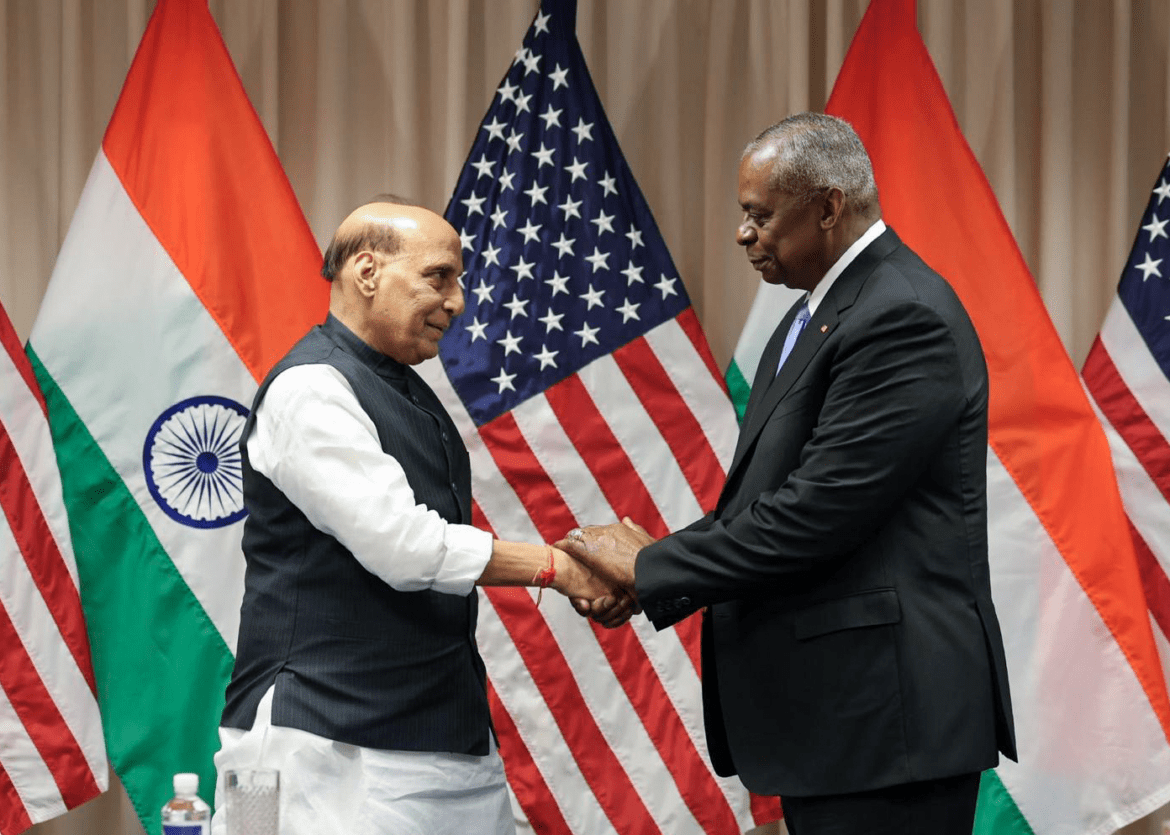AI Generated Summary
- With the recent signing of the Security of Supplies Arrangement (SOSA) and the impending Reciprocal Defence Procurement (RDP) Agreement, India and the US are laying the groundwork for a robust, future-proof defence collaboration that is not just about hardware but about a shared vision for a secure and stable Indo-Pacific region.
- By being part of the US Defence Priorities and Allocations System (DPAS), Indian companies can now play a more significant role in the global defence market, which not only bolsters India’s defence exports but also attracts advanced technologies and investment into the country.
- The growing defence partnership between India and the United States marks a pivotal shift in the global balance of power, as two of the world’s largest democracies increasingly align their strategic interests.
The growing defence partnership between India and the United States marks a pivotal shift in the global balance of power, as two of the world’s largest democracies increasingly align their strategic interests. With the recent signing of the Security of Supplies Arrangement (SOSA) and the impending Reciprocal Defence Procurement (RDP) Agreement, India and the US are laying the groundwork for a robust, future-proof defence collaboration that is not just about hardware but about a shared vision for a secure and stable Indo-Pacific region.
A Historical Perspective
The post-Cold War era saw the United States and India gradually overcoming the historical baggage that had kept them apart during the 20th century. The US’s interest in counterbalancing China’s rise in the Indo-Pacific and India’s desire to modernize its military capabilities created a fertile ground for deepening ties. What began as cautious engagement in the early 2000s has since evolved into a comprehensive strategic partnership, underpinned by numerous agreements that facilitate military cooperation, technology sharing, and joint production.

The progression of this relationship can be traced through a series of foundational agreements. The General Security of Military Information Agreement (GSOMIA) of 2002 initiated the process of intelligence sharing. This was followed by the Logistics Exchange Memorandum of Agreement (LEMOA) in 2016, which allowed the two countries to use each other’s military bases for repairs and resupplying. In 2018, the Communications Compatibility and Security Agreement (COMCASA) further solidified the partnership by enabling secure communication during joint operations. The Basic Exchange and Cooperation Agreement (BECA) signed in 2020 provided India with geospatial intelligence, significantly enhancing its military capabilities, especially along its contentious borders.
The Security of Supplies Arrangement (SOSA): A New Milestone
The SOSA represents a significant leap forward in the India-US defence relationship. While not legally binding, it allows for reciprocal priority support in defence supply chains, thereby enhancing the resilience and reliability of defence production for both nations. In essence, SOSA is a testament to the trust that has been built over years of cooperation. It allows US companies greater freedom to manufacture and source from India, thereby integrating India into the global supply chains of major American defence contractors.

For India, this agreement is a crucial step towards achieving self-reliance in defence production—a cornerstone of its ‘Atmanirbhar Bharat’ initiative. By being part of the US Defence Priorities and Allocations System (DPAS), Indian companies can now play a more significant role in the global defence market, which not only bolsters India’s defence exports but also attracts advanced technologies and investment into the country.
The Reciprocal Defence Procurement (RDP) Agreement: Binding the Future
The anticipated signing of the RDP Agreement will elevate the partnership to a new level by making the cooperative arrangements legally binding. This agreement will open doors for joint production, standardization, and interoperability of conventional defence equipment, which is essential for any future joint military operations. It will also provide American companies with the ability to bypass restrictive “Buy American” provisions, thus fostering a more integrated defence industrial base between the two nations.
Such an agreement is not just about defence trade; it’s about creating a seamless ecosystem where both nations can collaborate on cutting-edge technologies, co-develop advanced military systems, and ensure that their forces can operate in unison, if the need arises.
Strategic Autonomy and Global Leadership
India’s strategic autonomy—a principle deeply ingrained in its foreign policy—remains intact even as it strengthens its ties with the US. India’s unique position allows it to maintain close relations with Russia, Europe, and other global powers while deepening its partnership with the US. This ability to navigate complex global dynamics is what makes India a critical player in the emerging multipolar world order.

The US, recognizing India’s growing global influence and leadership within the Global South, has been more accommodating in its approach, offering India a status that is typically reserved for its closest allies. The designation of India as a Strategic Trade Authorisation-1 (STA-1) country, allowing access to advanced US technologies, is a clear indicator of this shift.
The Road Ahead
The India-US defence partnership is poised to grow even stronger, driven by mutual interests in maintaining regional stability, countering aggressive postures by China, and ensuring a free and open Indo-Pacific. The SOSA and the impending RDP Agreement are more than just defence deals; they are strategic tools that will shape the future of global security.
As India continues to rise as a global power, its partnership with the US will be a key pillar of its strategy to secure its borders, project power, and contribute to global peace. For the US, India’s role as a reliable partner in Asia is indispensable in its efforts to maintain a balance of power in the region.
The opinions expressed in this article are those of the author. They do not purport to reflect the opinions or views of Khalsa Vox or its members.




